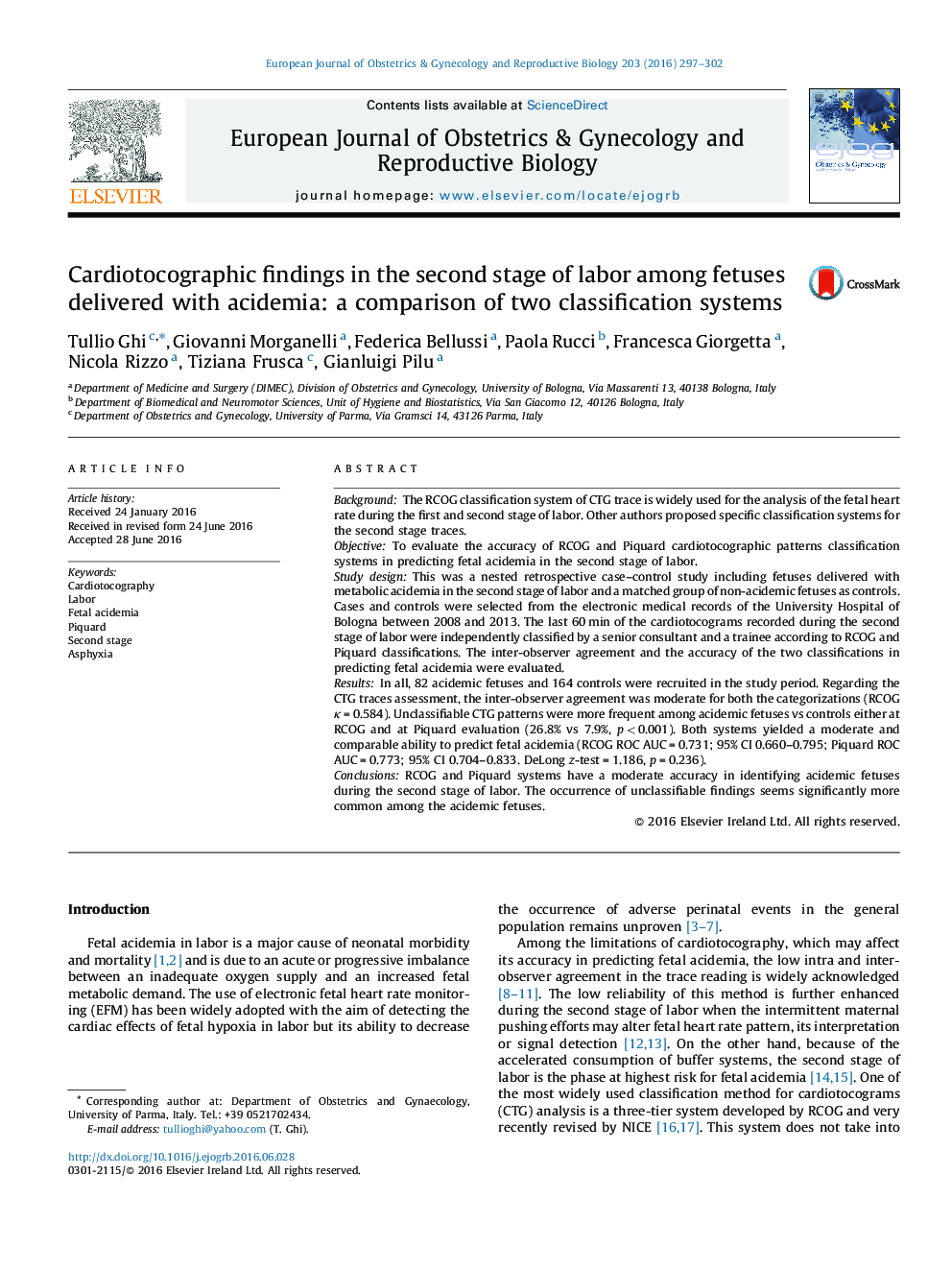| کد مقاله | کد نشریه | سال انتشار | مقاله انگلیسی | نسخه تمام متن |
|---|---|---|---|---|
| 6172760 | 1599778 | 2016 | 6 صفحه PDF | دانلود رایگان |
BackgroundThe RCOG classification system of CTG trace is widely used for the analysis of the fetal heart rate during the first and second stage of labor. Other authors proposed specific classification systems for the second stage traces.ObjectiveTo evaluate the accuracy of RCOG and Piquard cardiotocographic patterns classification systems in predicting fetal acidemia in the second stage of labor.Study designThis was a nested retrospective case-control study including fetuses delivered with metabolic acidemia in the second stage of labor and a matched group of non-acidemic fetuses as controls. Cases and controls were selected from the electronic medical records of the University Hospital of Bologna between 2008 and 2013. The last 60 min of the cardiotocograms recorded during the second stage of labor were independently classified by a senior consultant and a trainee according to RCOG and Piquard classifications. The inter-observer agreement and the accuracy of the two classifications in predicting fetal acidemia were evaluated.ResultsIn all, 82 acidemic fetuses and 164 controls were recruited in the study period. Regarding the CTG traces assessment, the inter-observer agreement was moderate for both the categorizations (RCOG κ = 0.584). Unclassifiable CTG patterns were more frequent among acidemic fetuses vs controls either at RCOG and at Piquard evaluation (26.8% vs 7.9%, p < 0.001). Both systems yielded a moderate and comparable ability to predict fetal acidemia (RCOG ROC AUC = 0.731; 95% CI 0.660-0.795; Piquard ROC AUC = 0.773; 95% CI 0.704-0.833. DeLong z-test = 1.186, p = 0.236).ConclusionsRCOG and Piquard systems have a moderate accuracy in identifying acidemic fetuses during the second stage of labor. The occurrence of unclassifiable findings seems significantly more common among the acidemic fetuses.
Journal: European Journal of Obstetrics & Gynecology and Reproductive Biology - Volume 203, August 2016, Pages 297-302
